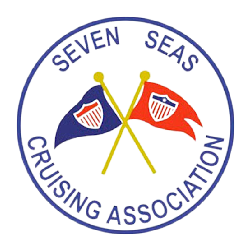A mooring refers to any permanent structure to which a vessel may be secured. A "mooring system" refers to the various components - an anchor, a rode (typically a rope, chain, or cable), a buoy and a pennant. An anchor is used to fix a vessel to a point on the bottom of the seafloor without connecting it to land.
There are four basic types of anchors used in moorings: deadweight anchor, mushroom anchors, pyramid anchors and helix anchors. Below describes the types of anchors and their characteristics.
Deadweight Anchor
Holding Power: An 8,000-lb. concrete mooring has approximately 4,000 lb. of holding power.
Advantages: Simple design; Good for most bottom types; Holds position even if dragged during storm.
Disadvantages: Heavy and bulky; Requires assistance for installation
Notes:
- Better suited for rock bottoms.
- Deadweight moorings made from concrete can lose over one-half of their weight when submerged in water.
- Deadweight moorings made from granite can lose over one-third of their weight when submerged in water.
- Fault lines in stone anchors can crack when putting in staples.
Mushroom Anchor
Holding Power: A 500-lb. mushroom anchor has approximately 1,200 lb. of holding power.
Advantages: High holding power-to-weight ratio.
Disadvantages: Limited success in rocky areas; Prone to spin-out and chain wrap.
Notes:
- Better suited for muddy bottom conditions.
- Weight of mushroom anchors generally would be 10 to 20 lbs per foot of boat in mud bottom.
- Proper installation is important to assure it's buried.
Pyramid Anchor
Holding Power: A 650-lb. pyramid anchor has approximately 6,500 lb. of holding power.
Advantages: High holding power-to-weight ratio; Simple design.
Disadvantages: Limited success in rocky areas; Higher Cost.
Notes:
- Better suited for muddy bottom conditions.
- Size and shape help penetrate the bottom more rapidly.
- Weight of pyramid anchors generally would be 10 to 20 lbs per foot of boat in mud bottom.
Helix Anchor
Holding Power: A 10-inch screw Helix anchor has approximately 10,000 lb. of holding power.
Advantages: High holding power-to-weight ratio; Small size; Longevity; More environmentally sensitive.
Disadvantages: Heavy and bulky; Requires specialized installer; Difficult in rock; More difficult to move.
Notes:
- Better suited for softer bottom conditions.
- Don't perform as well in rocky bottoms.
- Type of helix used might differ with condition of bottom.
- Requires diver to set and maintain.











